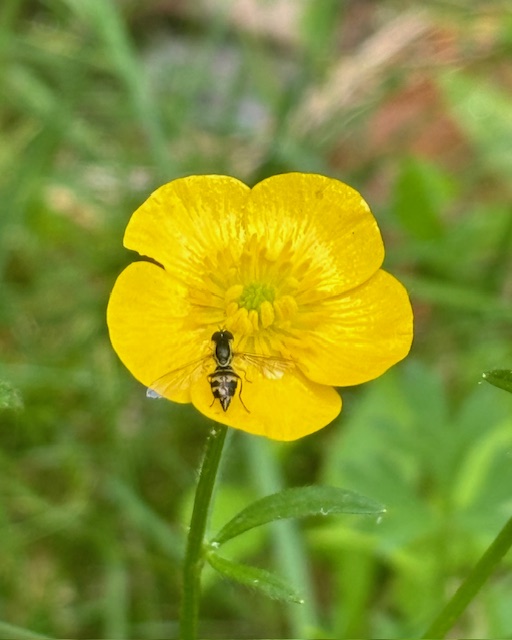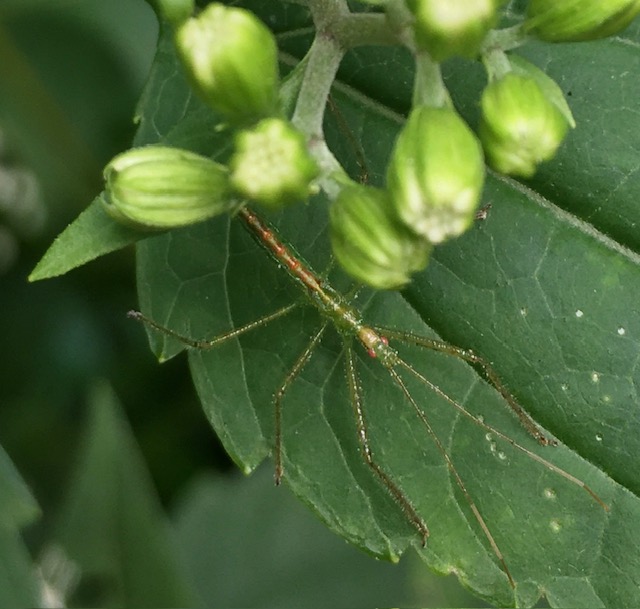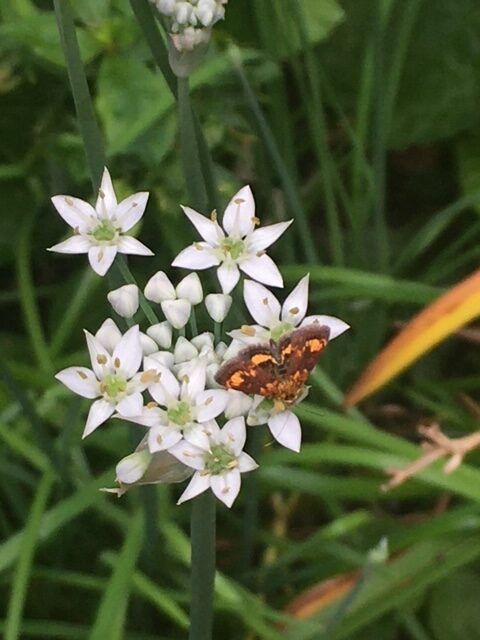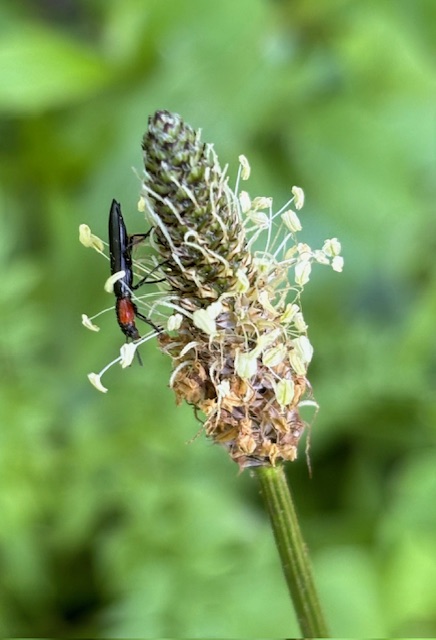
False blister beetles on trout lily
The human eye is naturally drawn to the grand vista – sweeping views of distant landscapes – so that we often overlook the minutiae living at our feet. Much of the intersection between the plant and animal world happens at eye level and literally right in front of us.
Here is a close-up view of some of the tiny creatures who live in and visit meadow and woodland habitats. All are smaller than a dime. Most are pollinators; two are predators, and one is parasitic. Each one has its place in the grand scheme of Nature.

Flower fly on a buttercup
Flower flies visit flowers for nectar. While they don’t collect pollen, they do transfer pollen granules by moving from bloom to bloom. They are considered the 2nd most important pollinators after bees. There are about 900 species of flower flies in North America. Many of them mimic bees in appearance, but they have no stingers and do not bite. They are often seen hovering over blossoms.
Green sweat bees have short tongues and feed on open and flat flowers rather than tubular ones. They are also attracted to honeydew made by aphid colonies. These bees nest communally underground and use a common entrance to gain access to their individual nesting cells. While they nest in proximity, each female takes care of her own offspring. They are active from April through September.

Green sweat bee on butterfly weed

Ambush bug on purple cornflower
Ambush bugs are tiny predators with powerful forelegs that they use to grab their prey. They hide motionlessly in flowers and wait to pounce. The adults catch bees, wasps, flies, and even butterflies, while the immature ones feed on small, soft-bodied insects and mites, which are often garden pests.
Assassin bugs also prey on insects by piercing their bodies with their straw-like beaks and sucking out the juices. There are almost 200 species of them in North America. The adults look quite different from the hatchlings, or nymphs, and pack a nasty bite…a good reason to wear gloves while working in the garden or natural landscapes.

Assassin bug nymph on white snakeroot

Orange mint moth on garlic chives
This tiny day-flying moth is active from mid-June through late July. The larva feeds on a number of host plants in the mint family, including catmint, spearmint, and bee balm.
Adult elephant mosquitoes subsist on a carbohydrate diet that includes nectar, honeydew, sap, and fruit. They do not bite or suck blood. In their larval form, they prey on the larva of pesky, blood-sucking mosquitoes. Good to have around!

Elephant mosquito on autumn sedum

Wedge-shaped beetle on mountain mint
In their larval form, wedge-shaped beetles are parasitic of bees and wasps. Adult females hang out in flowers, feeding on nectar and laying eggs. The tiny hatchlings hitch a ride on unsuspecting bees and wasps and are carried back to their nests, where they dine on their host’s larva.
Mining bees are solitary nesters that lay their eggs in underground tunnels. They are active in early spring and are effective pollinators of fruit trees, blueberries, understory trees, and wildflowers. Their larva lives underground and takes a year to mature into adults.

Mining bee on wild geranium

March fly on plantain flower
There are 32 different species of March flies in North America. Most live in wooded areas and are active in the spring. Some of the adults are pollinators and feed on pollen, nectar, and honeydew. They are known to pollinate apples and other orchard fruits that bloom in the spring.
Recent Comments